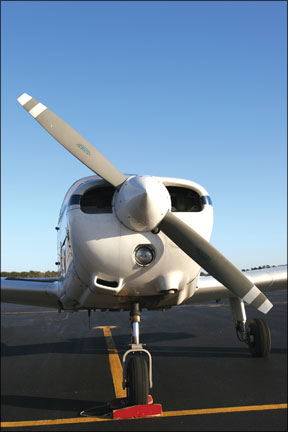I recently rented a Cherokee for a short flight. When I went up to the rental office, I was handed the book for the plane containing all of the pertinent information particular to it. On the books cover I found a notice stating in large bold print: “After flight please 288 place the propeller in the vertical position.” I understand the reasoning behind that request is to signal fuel truck drivers to fill the tanks of any aircraft with a vertical propeller. One of the very first things I do as a renter after opening the door of an airplane I intend to fly is to make certain all switches are in their proper place. Afterward, I begin the in-cockpit portion of my pre-flight: Engage the battery to ensure all lights and beacons are working. Later, as my walk-around reaches the front of the airplane, I run the palm of my hand down the propellers leading edge to feel for any nicks. After completing my pre-flight I would go through the proper pre-start procedures, as outlined in the book specific for that type of plane. Meanwhile, some instructors and/or FBOs advocate rocking the propeller during a cold-weather preflight to determine the engine oils viscosity. While some experienced pilots may reliably use such a technique, I sincerely doubt the average renter can. I see the FBOs request to move the propeller as potentially an extremely dangerous one, due to the obvious risk of a “hot” magneto. If a “p-lead” came loose in flight, and unless a mag check was performed before shutting down, and the failure repaired before the next renter took off, theres a huge potential for severe injury or death from moving the propeller into the vertical position after shutting down. – Gabor Zolna




